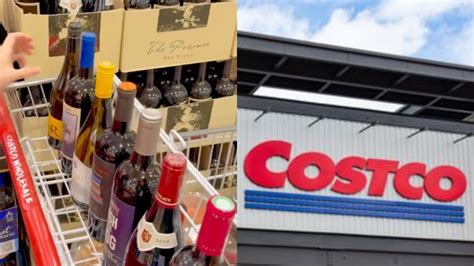
Consumers are re-evaluating their purchasing habits, ditching certain products and embracing alternatives amid rising costs and evolving preferences. A recent online discussion reveals a growing trend of people abandoning specific items in favor of more cost-effective, sustainable, or simply better options, signaling a shift in consumer behavior and market demand.
The shift in consumer preferences is impacting various sectors, from food and beverages to home goods and entertainment, as individuals seek greater value, convenience, and alignment with their personal values. The trend highlights a growing awareness of spending habits and a willingness to adapt to changing economic conditions and lifestyle priorities.
Products Facing the Axe: A Detailed Look
The online forum, which served as the basis for the Yahoo Lifestyle article, revealed a diverse range of products that consumers are increasingly choosing to forgo. These decisions are driven by factors such as cost, perceived value, health concerns, environmental impact, and the availability of superior alternatives.
-
Cable Television: Streaming services have emerged as a dominant force, offering a wider selection of content at a lower price point than traditional cable packages. As one respondent noted, “Cable. It’s too expensive, and I don’t watch enough TV to justify the cost.” The convenience and flexibility of streaming platforms, coupled with their extensive libraries, have made them an attractive alternative for many households. This change has had significant implications for the traditional media industry, forcing cable providers to adapt their business models to compete in the digital age.
-
Name-Brand Clothing: The rise of fast fashion and affordable online retailers has challenged the dominance of established clothing brands. Consumers are increasingly willing to prioritize affordability and style over brand recognition, leading to a decline in sales for some high-end apparel companies. Additionally, concerns about ethical sourcing and sustainability have prompted some shoppers to seek out alternative brands that align with their values. “Name-brand clothes. I can get the same quality for a fraction of the price,” one commenter shared, highlighting the growing price sensitivity among consumers.
-
Soda: Health concerns related to sugar content and artificial sweeteners have contributed to a decline in soda consumption. Consumers are increasingly opting for healthier alternatives such as sparkling water, flavored water, and unsweetened beverages. This trend has forced soda companies to diversify their product offerings to include healthier options and adapt to changing consumer preferences. The introduction of zero-sugar varieties and flavored sparkling waters reflects the industry’s attempt to cater to health-conscious consumers.
-
Paper Towels: Environmental concerns and the availability of reusable alternatives such as microfiber cloths have led to a decrease in the use of paper towels. Consumers are becoming more aware of the environmental impact of disposable products and are actively seeking ways to reduce their waste. This shift towards sustainability has created a growing market for reusable cleaning products and eco-friendly alternatives. “Paper towels. I switched to reusable microfiber cloths,” one person stated, exemplifying the growing trend of environmentally conscious consumption.
-
Gym Memberships: The rise of home workout programs and online fitness classes has provided consumers with more convenient and affordable alternatives to traditional gym memberships. The flexibility and accessibility of these options have made them particularly appealing to busy individuals who struggle to find time to visit the gym. The COVID-19 pandemic further accelerated this trend, as many gyms were forced to close temporarily, prompting people to explore alternative workout options at home. “Gym memberships. I can get a better workout at home for free,” one respondent pointed out, highlighting the appeal of cost-effective and convenient fitness solutions.
-
Dryer Sheets: Concerns about the chemicals in dryer sheets and the availability of eco-friendly alternatives have led some consumers to ditch this laundry room staple. Wool dryer balls, for example, offer a natural and reusable alternative that softens clothes and reduces drying time. This shift reflects a growing awareness of the potential health and environmental impacts of household products and a willingness to adopt more sustainable practices.
-
Fast Food: Concerns about health, nutrition, and the quality of ingredients have led some consumers to reduce their consumption of fast food. The availability of healthier and more convenient meal options, such as meal kits and prepared meals, has also contributed to this trend. Additionally, growing awareness of the social and environmental impacts of the fast-food industry has prompted some consumers to seek out more ethical and sustainable alternatives.
-
Brand New Cars: The high cost of new cars and the availability of reliable used vehicles have led some consumers to reconsider their purchasing decisions. The depreciation of new cars, coupled with the rising cost of insurance and maintenance, has made used cars a more attractive option for budget-conscious buyers. Additionally, the increasing availability of vehicle history reports and certified pre-owned programs has made it easier to find reliable used cars.
-
K-Cups: The environmental impact of single-use coffee pods has led some consumers to switch to more sustainable coffee brewing methods such as pour-over, French press, or reusable K-Cups. This shift reflects a growing awareness of the environmental consequences of disposable products and a willingness to adopt more eco-friendly practices.
-
Bottled Water: Concerns about plastic waste and the availability of filtered tap water have led some consumers to reduce their consumption of bottled water. Reusable water bottles have become increasingly popular, offering a convenient and sustainable alternative to disposable plastic bottles. Additionally, many households now have access to filtered water through their refrigerators or water filter pitchers, making it easier to avoid the need for bottled water.
-
Daily Coffee Runs: The expense of buying coffee from coffee shops every day adds up, prompting many to brew their own at home. Investing in a good coffee maker and experimenting with different beans can provide a cost-effective and satisfying alternative to daily coffee runs.
-
Manicures/Pedicures: The cost and time commitment of regular manicures and pedicures have led some to opt for doing their own nail care at home. With the availability of high-quality nail polishes and tools, achieving salon-worthy results at home is becoming increasingly accessible.
-
Excessive Online Shopping: The ease and convenience of online shopping can lead to overspending and impulse purchases. Some are consciously cutting back on online shopping to save money and reduce clutter.
-
Professional Lawn Care: The cost of hiring a professional lawn care service can be significant. Many are opting to maintain their lawns themselves to save money and enjoy the outdoor activity.
-
Fancy Gadgets: The allure of the latest gadgets can be strong, but some are realizing that they don’t need all the bells and whistles. They are focusing on functionality and value over trendy features.
-
Extended Warranties: Many are questioning the value of extended warranties, finding that they rarely use them and that the cost outweighs the benefits.
-
Impulse Buys: Consciously avoiding impulse buys is a way to save money and reduce clutter. Planning purchases and waiting before buying helps avoid unnecessary spending.
-
Name-Brand Cleaning Products: Generic or store-brand cleaning products often perform just as well as name-brand products at a lower cost.
-
Excessive Meat Consumption: Concerns about health, the environment, and animal welfare are leading some to reduce their meat consumption.
-
Elaborate Birthday Parties: The pressure to throw extravagant birthday parties can be stressful and expensive. Some are opting for simpler, more intimate celebrations.
-
Designer Handbags: The high cost of designer handbags can be prohibitive. Many are finding stylish and functional alternatives at more affordable prices.
-
High-End Makeup: Drugstore makeup brands have improved significantly in quality, offering comparable results to high-end brands at a fraction of the cost.
-
New Books: Libraries and used bookstores offer a wealth of reading material at little or no cost.
-
Pre-Cut Vegetables: While convenient, pre-cut vegetables are often more expensive than buying whole vegetables and cutting them yourself.
-
Premium Gas: Unless specifically required by the vehicle manufacturer, regular gas is often sufficient and saves money.
-
Expensive Phone Plans: Exploring cheaper phone plans or prepaid options can significantly reduce monthly expenses.
-
Daily Lottery Tickets: The odds of winning the lottery are slim, making it a poor investment.
-
Unused Subscriptions: Canceling unused subscriptions can free up significant amounts of money each month.
Factors Driving the Shift
Several key factors are contributing to this evolving consumer landscape:
-
Economic Pressures: Rising inflation and economic uncertainty are forcing consumers to prioritize value and cut back on non-essential spending. As one respondent noted, “I’m just trying to save money wherever I can.” The current economic climate has made consumers more conscious of their spending habits and more willing to explore alternative options.
-
Increased Awareness: Growing awareness of health, environmental, and social issues is influencing consumer choices. Consumers are increasingly seeking out products and brands that align with their values. This includes opting for healthier food options, eco-friendly products, and brands that are committed to ethical sourcing and sustainability.
-
Technological Advancements: The rise of e-commerce, streaming services, and online fitness platforms has provided consumers with more convenient and affordable alternatives to traditional products and services. These technological advancements have disrupted traditional industries and empowered consumers with more choices.
-
Changing Lifestyles: Shifting lifestyle priorities are also playing a role. Consumers are increasingly valuing experiences over material possessions and seeking out products and services that fit their busy lifestyles. This includes opting for meal kits that save time on cooking, online fitness classes that can be done at home, and travel experiences that create lasting memories.
Industry Impact and Adaptations
The shift in consumer preferences is having a significant impact on various industries, forcing companies to adapt their business models to remain competitive.
-
Retail: Retailers are responding to the trend by offering more affordable private-label products, emphasizing value and convenience, and focusing on customer experience. They are also investing in e-commerce and omnichannel strategies to reach consumers where they are.
-
Food and Beverage: Food and beverage companies are diversifying their product offerings to include healthier options, sustainable packaging, and plant-based alternatives. They are also focusing on transparency and traceability to build trust with consumers.
-
Media and Entertainment: Media and entertainment companies are adapting to the rise of streaming services by creating their own streaming platforms and offering a wider range of content. They are also exploring new revenue models such as subscription services and digital advertising.
-
Automotive: Automotive manufacturers are focusing on developing more fuel-efficient and electric vehicles to meet the growing demand for sustainable transportation. They are also investing in new technologies such as autonomous driving and connected car services.
The Future of Consumerism
The trends discussed in the online forum suggest a future of consumerism characterized by greater value consciousness, sustainability, and personalization. Consumers are likely to continue to prioritize value and convenience, seek out products and brands that align with their values, and embrace new technologies that make their lives easier.
As one respondent succinctly put it, “It’s all about finding what works best for you and your budget.” This sentiment encapsulates the growing trend of consumers taking control of their spending habits and making informed decisions based on their individual needs and priorities.
Conclusion:
The “28 Products People Ditch” trend reflects a significant shift in consumer behavior driven by economic pressures, increased awareness, technological advancements, and changing lifestyles. Consumers are re-evaluating their purchasing habits and embracing alternatives that offer greater value, convenience, and alignment with their personal values. This trend is having a profound impact on various industries, forcing companies to adapt their business models to remain competitive in an evolving marketplace. The future of consumerism is likely to be characterized by greater value consciousness, sustainability, and personalization, as consumers take control of their spending habits and make informed decisions based on their individual needs and priorities.
Frequently Asked Questions (FAQ)
Q1: What are the main reasons people are ditching certain products?
A: Several factors contribute to this trend. Economic pressures like inflation are forcing people to prioritize value and cut back on non-essentials. Increased awareness of health, environmental, and social issues is also influencing consumer choices, leading them to seek sustainable and ethical alternatives. Technological advancements, such as streaming services and online fitness programs, offer more convenient and affordable options than traditional products and services. Finally, shifting lifestyle priorities are leading consumers to value experiences over material possessions.
Q2: What are some examples of products people are ditching and why?
A: Cable television is being replaced by streaming services due to cost and content variety. Name-brand clothing is losing ground to more affordable alternatives. Soda consumption is declining due to health concerns. Paper towels are being swapped for reusable cloths for environmental reasons. Gym memberships are being substituted by home workouts for convenience and cost savings. Bottled water is being replaced by reusable bottles and filtered tap water to reduce plastic waste. Other examples include K-Cups, fast food, and brand new cars, all being replaced with more sustainable or cost-effective alternatives.
Q3: How are businesses responding to these changing consumer preferences?
A: Businesses are adapting in several ways. Retailers are offering more affordable private-label products and focusing on customer experience. Food and beverage companies are diversifying their offerings to include healthier options and sustainable packaging. Media companies are launching streaming platforms to compete with traditional cable. Automotive manufacturers are developing electric vehicles to meet the demand for sustainable transportation. In general, companies are focusing on providing value, convenience, and aligning with consumer values to remain competitive.
Q4: What does this trend suggest about the future of consumerism?
A: This trend suggests that the future of consumerism will be characterized by greater value consciousness, sustainability, and personalization. Consumers will likely continue to prioritize value and convenience, seek out products and brands that align with their values, and embrace new technologies that make their lives easier. The focus will shift from simply acquiring material possessions to making informed choices that reflect individual needs and priorities.
Q5: Is this trend likely to continue in the long term?
A: Yes, it is likely that this trend will continue in the long term. The underlying factors driving this shift, such as economic pressures, increased awareness, technological advancements, and changing lifestyles, are not likely to disappear anytime soon. In fact, these factors may become even more pronounced in the future, further accelerating the shift towards more value-conscious, sustainable, and personalized consumerism.









